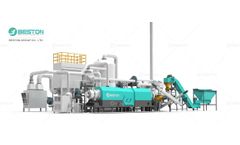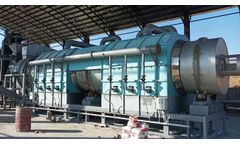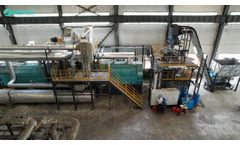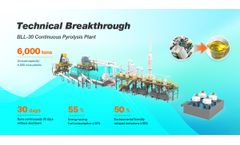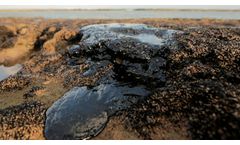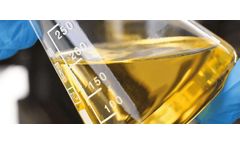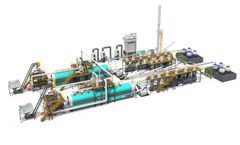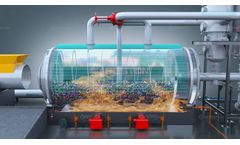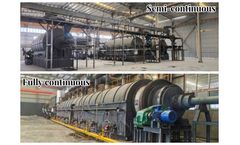Refine by
Pyrolysis Plant Articles & Analysis
497 articles found
Among the emerging solutions, biochar production through biomass carbonization is gaining attention as both a waste management tool and a carbon sequestration strategy. While large-scale biomass pyrolysis plants often dominate headlines, they require substantial capital and long-term commitment. ...
Feedstock Preparation and Handling The foundation of reliable operation of biomass pyrolysis plant for sale lies in feedstock quality. Materials should be properly dried to reduce excessive moisture, which can destabilize reactor temperatures and lower carbonization efficiency. ...
Advances in Efficiency Recent innovations in pyrolysis plant design and operation are increasing the efficiency of the process. ...
For operators of a continuous plastic pyrolysis plant, the regulatory landscape encompasses emissions standards, waste classification, occupational safety, and broader industrial governance. ...
Why ISCC Certification Matters for Pyrolysis Oil With increasing demand for sustainable alternatives in the energy and chemical sectors, ISCC certification has become a key requirement for pyrolysis oil producers and downstream users alike. ...
At the forefront of this evolution is the biomass pyrolysis plant for sale, an industrial solution engineered to convert agricultural residues, forestry waste, and other organic materials into biochar—a stable, porous solid additive. ...
Pyrolysis technology has become a cornerstone in waste-to-energy and carbon-negative operations. ...
Central to this evolution is the refinement of continuous pyrolysis plant design, which now integrates cutting-edge reactor engineering to enhance thermal performance, throughput, and system longevity. ...
Biomass pyrolysis plants not only offer a sustainable method for energy production but also provide an eco-friendly approach to managing agricultural, industrial, and municipal waste. ...
The continuous pyrolysis equipment for plastic, tire, and oil sludge cracking has seen significant advancements in technology that offer improved efficiency, cost savings, and environmental benefits. ...
Through the use of oil sludge pyrolysis plant, oil sludge can be converted into valuable byproducts, such as bio-oil, carbon black, and gas, thus offering a twofold benefit: waste remediation and resource recovery. ...
To significantly reduce the amount of plastic waste entering the oceans, more advanced technologies need to be developed and implemented on a large scale. This is where pyrolysis technology steps in. How Pyrolysis Technology Works Pyrolysis is a thermochemical process that decomposes organic materials in the absence of oxygen, typically at ...
One of the main advantages of biomass pyrolysis is its ability to mitigate the negative environmental impacts associated with other biofuel production methods. ...
Plastic pyrolysis plant results in several products, including gases, oils, and solid residues. ...
Unlike traditional combustion, where biomass is fully burned, gasification partially oxidizes the biomass, allowing for the extraction of usable gases. Understanding Pyrolysis Pyrolysis, on the other hand, is a thermal decomposition process that occurs in the absence of oxygen. ...
This process is commonly used for smaller-scale pyrolysis plants or where the input materials vary in size and type. While batch pyrolysis offers flexibility, it can be less efficient compared to continuous pyrolysis because of the downtime between batches. 2. ...
The thermal efficiency of a pyrolysis reactor is a critical factor in determining the overall performance, energy consumption, and economic feasibility of the pyrolysis process. ...
Control System and Electrical Equipment A reliable and automated control system is essential for managing the continuous operation of the pyrolysis plant. PLC Control System: A Programmable Logic Controller (PLC) is used to monitor and control all aspects of the pyrolysis process, including the feeding system, reactor temperature, gas collection, ...
The operating cycle time in a continuous pyrolysis plant is the complete duration required for raw waste materials to enter, undergo pyrolysis, and exit as refined end products. Unlike batch or semi-continuous pyrolysis plants, where processing takes place in phases, continuous pyrolysis operates ...
The relative proportions of these components influence the yields and characteristics of the pyrolysis products. 2. Pyrolysis Process: During pyrolysis, biomass is heated in the absence of oxygen, causing it to break down into smaller molecules. The biomass fraction that converts into gaseous and liquid products varies depending on factors like ...

